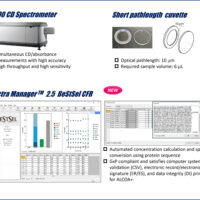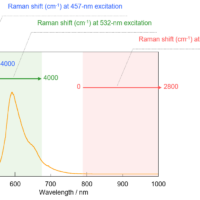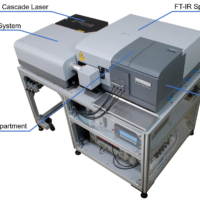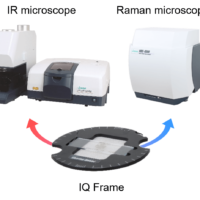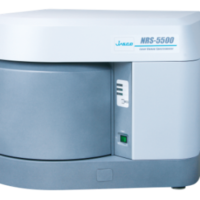Introduction
JASCO can provide microscopic spectrophotometer, which is for transmission and reflection measurements of a sample as small as 10 µmφ in a wide wavelength range from ultraviolet to near-infrared. It has a built-in Glan-Taylor polarizer as standard and can obtain optical constant such as refractive index(n) and extinction coefficient(k) by measuring reflectance spectrum of small monocrystalline having birefringence. This time, the monocrystalline sapphire (measurement area size: 50 µmφ), which has two types of crystal axis (c-axis or a-axis) and whose refractive index is already known, was measured and the dispersion of the refractive index was calculated.
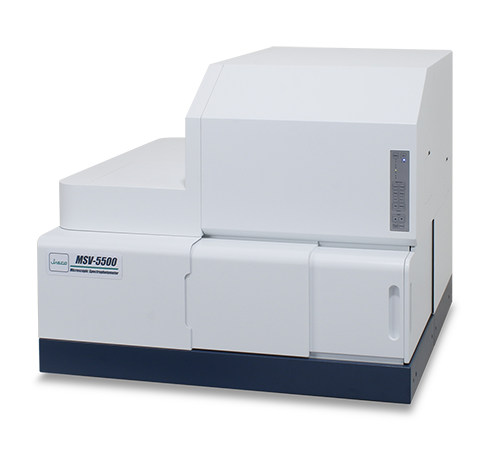
MSV-5500 UV/VIS microscopic spectrophotometer
Experimental
Sample
Monocrystalline sapphire
Measurement
(1) Baseline: Two baselines of Al vapor-deposited mirror were measured with polarizer angles at 0 and 90 degrees as a reference.
(2) Determination of crystalline axis: Under the condition of the polarizer angle at 0 degrees and wavelength at 550 nm, the sample was rotated to find the angle of sample where the sample showed maximum reflectance. Then c-axis was determined by this angle and as orthogonal of c-axis, a-axis was determined as.
(3) Sample Measurement: After determination of c-axis, the reflection spectra were measured at polarizer angles at 0 and at 90 degrees respectively.
(4) Conversion into absolute reflectance: The absolute reflectance spectrum of the sample was calculated by multiplying the obtained relative reflectance by the absolute reflectance spectrum of Al vapor-deposited mirror.
Analysis
Two kinds of calculation methods were used for obtaining the refractive index and the results were compared.
(1) Method using [UV/Vis Kramers-Kronig Transform] Program:
The refractive index (n) is expressed by specular reflectance spectrum (R) and phase change (Φ) (Equation 1). Since the Kramers-Kronig (K-K) equation can be applied to specular reflectance spectrum (R) and phase change (Φ) (Equation 2), phase change (Φ) was calculated by K-K conversion of specular reflectance spectrum (R) and then, the refractive index (n) was calculated.


(2) Method using [Multi-layer Analysis] Program (Application of Fresnel equation):
Reflectance spectrum is expressed by the refractive index of the air and the sample (n1, n2), the incident angle (θ1) and the reflection angle (θ2) (Equation 3). By applying this equation, the wavelength dispersion of the refractive index was calculated using [Multi-layer Analysis] Program by fitting the calculated reflectance spectrum using Equation 3 to the measured spectrum.

Measurement parameters
Spectral bandwidth: 5.0 nm
Scan speed: 200 nm/min
Response: Slow
Data interval: 0.1 nm
Accumulation: 3 times
Cassegrain objective : 16×
Incident angle: 23 degrees
IN aperture: 50 µmφ
OUT aperture: 50 µmφ
Angle of polarizer: 0, 90 degrees
Keywords
microscope, polarized light, refractive index, birefringence
Results
Absolute reflectance spectrum of monocrystalline sapphire is shown in Figure 1. Reflectance of ordinary light (c-axis) is approximately 0.15 % higher than that of extraordinary light (a-axis).
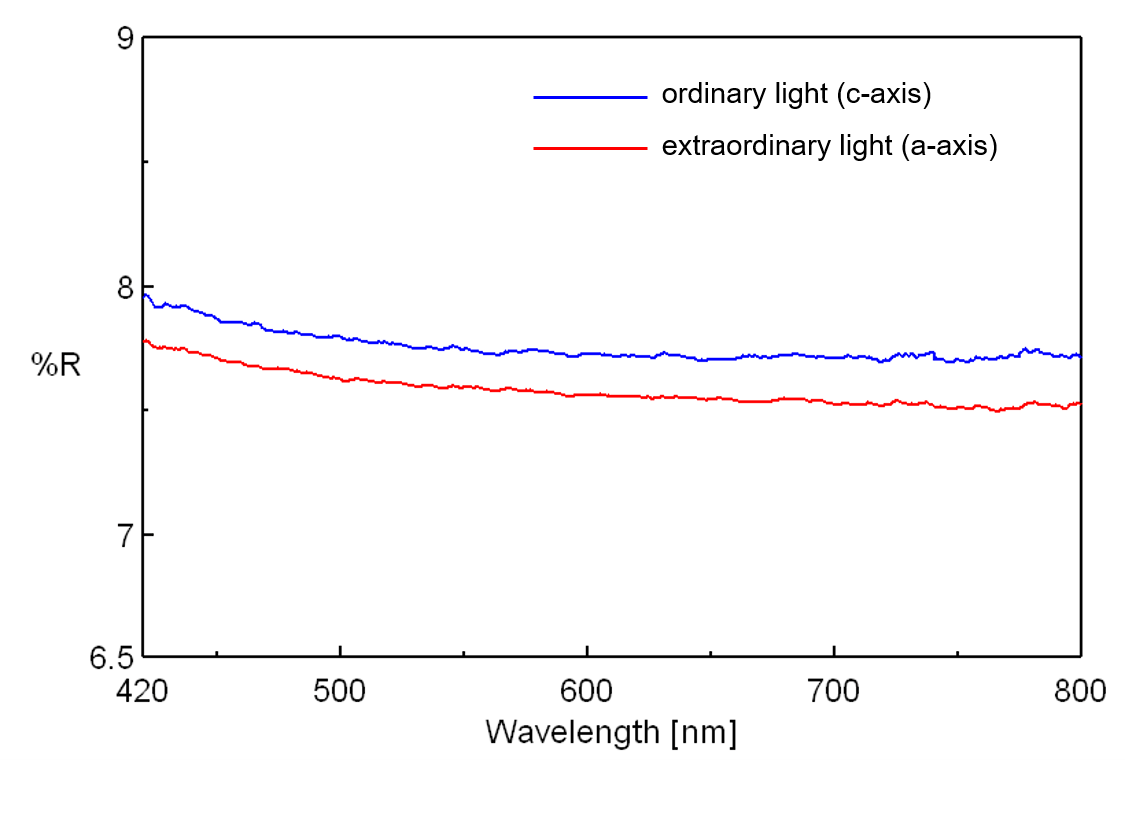
Figure 1. Absolute reflectance spectra of monocrystalline sapphire
By using [UV/Vis Kramers-Kronig Transform] and [Multi-layer Analysis] Program, the wavelength dispersion of the refractive index was obtained (Figure 2 and Figure 3).
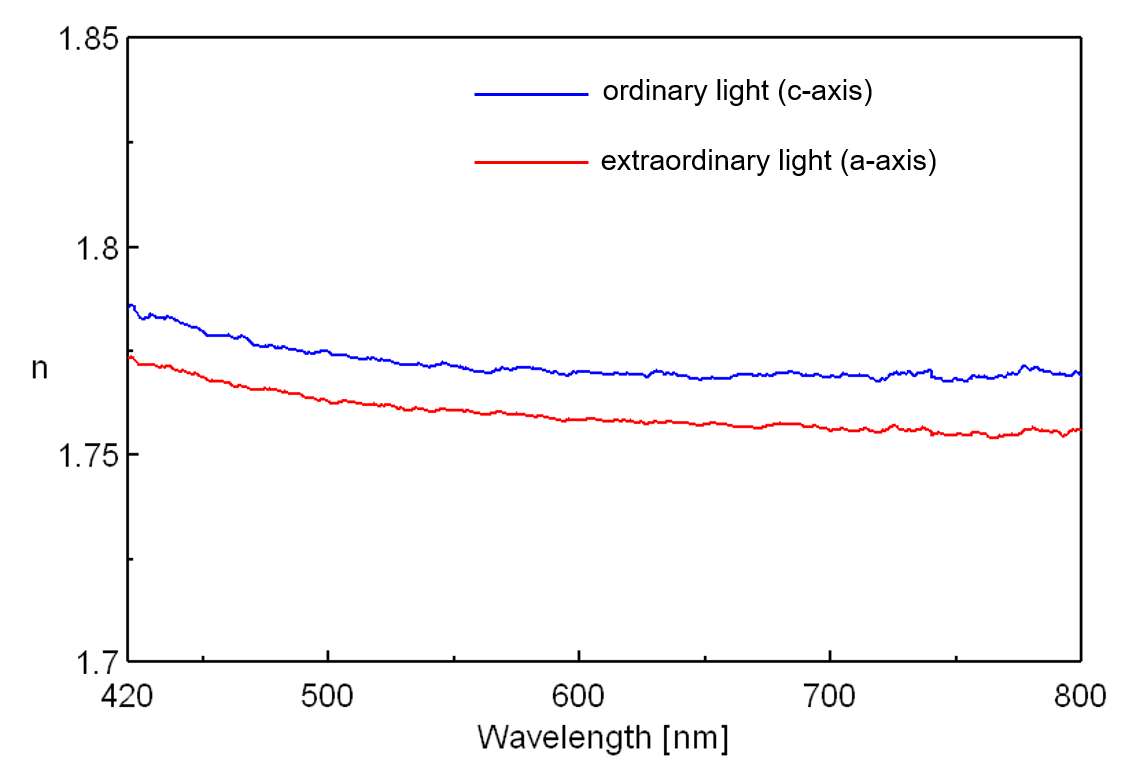
Figure 2. Wavelength dispersion of refractive index of monocrystalline sapphire (by using [UV/Vis Kramers-Kronig Transform] Program)
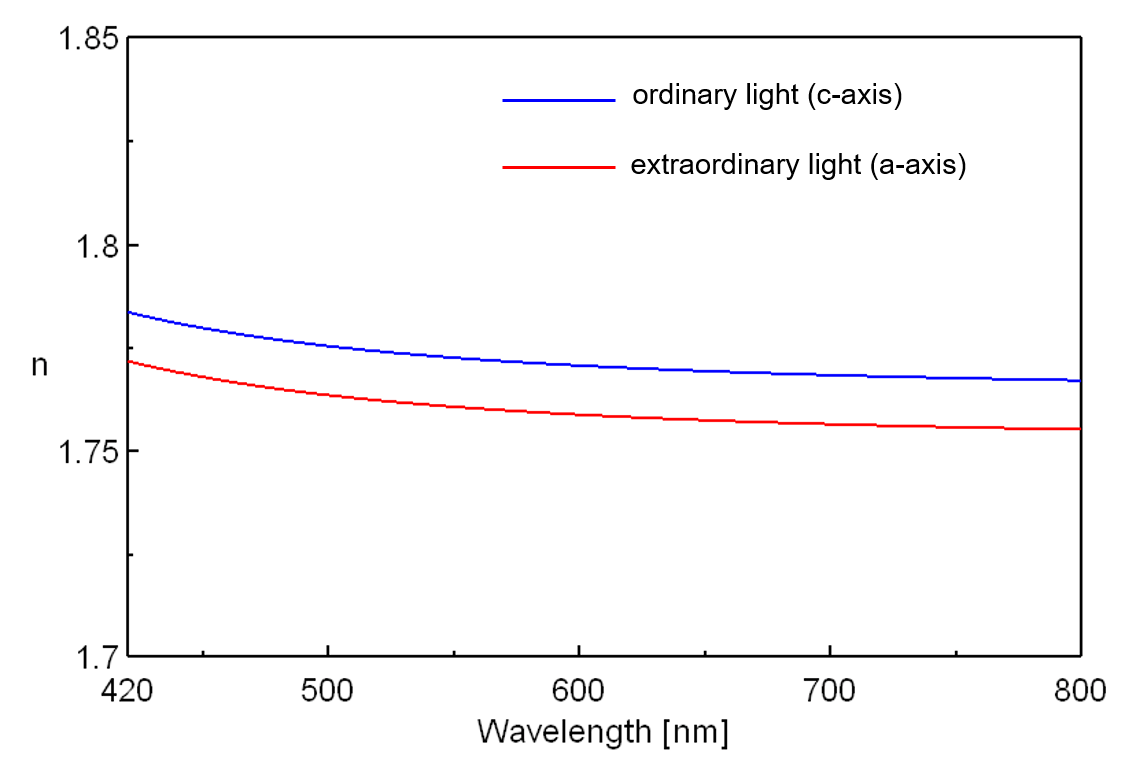
Figure 3. Wavelength dispersion of refractive index of monocrystalline sapphire (by using [Multi-layer Analysis] Program)
Table 1 and Table 2 show the result compared with the literature value of the reflective index of ordinary light and extraordinary light. The refractive index was determined with precision of two decimal places in a small area of several tens of microns, by either calculating method.
Table 1 Comparison with literature value of the refractive index of monocrystalline sapphire (ordinary light)
Table 1 Comparison with literature value of the refractive index of monocrystalline sapphire (ordinary light)
| Wavelength [nm] | Literature value | UV/Vis Kramers-Kronig Transform | Multilayer analysis | ||
| Refractive index | Refractive index | Error | Refractive index | Error | |
| 632.8 | 1.766 | 1.770 | 0.0037 | 1.769 | 0.0036 |
| 589.3 | 1.768 | 1.770 | 0.0016 | 1.771 | 0.0028 |
| 546.1 | 1.771 | 1.772 | 0.0012 | 1.773 | 0.0018 |
| 532.0 | 1.772 | 1.771 | -0.0005 | 1.773 | 0.0015 |
| 514.5 | 1.773 | 1.773 | -0.0005 | 1.774 | 0.0011 |
| 488.0 | 1.775 | 1.775 | -0.0005 | 1.776 | 0.0007 |
Table 2 Comparison with literature value of the refractive index of monocrystalline sapphire (extraordinary light)
| Wavelength [nm] | Literature value | UV/Vis Kramers-Kronig Transform | Multilayer analysis | ||
| Refractive index | Refractive index | Error | Refractive index | Error | |
| 632.8 | 1.758 | 1.757 | -0.0005 | 1.758 | -0.0003 |
| 589.3 | 1.760 | 1.758 | -0.0015 | 1.759 | -0.0011 |
| 546.1 | 1.763 | 1.761 | -0.0017 | 1.761 | -0.0020 |
| 532.0 | 1.764 | 1.761 | -0.0030 | 1.761 | -0.0022 |
| 514.5 | 1.765 | 1.762 | -0.0032 | 1.762 | -0.0026 |
| 488.0 | 1.767 | 1.764 | -0.0028 | 1.764 | -0.0030 |


